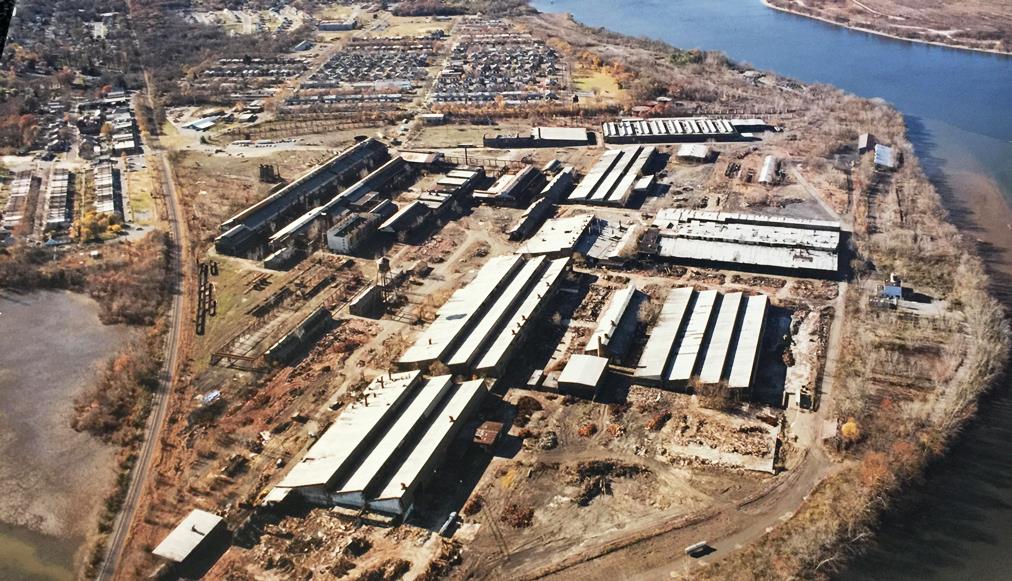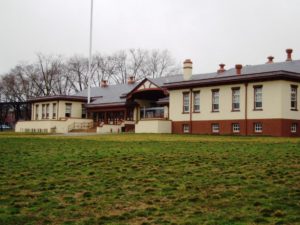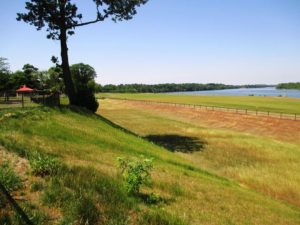On January 17, 2018 the U.S. Environmental Protection Agency (EPA) released its initial list of Superfund National Priorities List (NPL) sites with the greatest expected redevelopment and commercial potential.
The Roebling Steel Company Superfund Site on the Delaware River in Florence Township, New Jersey is one of the targeted sites. The 200-acre area is a former manufacturing plant for steel and wire products. The Roebling Steel Company produced steel wire and cable at the site for many years before closing in the 1980s.
Parts of the site were later used for other commercial and industrial operations, such as housing polymer reclamation, storing insulating products, refurbishing refrigerated trailers and shipping containers, and construction equipment storage. The raw materials and waste products that these operations produced were stored or buried in several on-site locations. These waste disposal practices contaminated the soil, sediment and groundwater.
Seventy buildings occupied much of the site. Buildings on site contained contaminated process dust, exposed asbestos, and liquid and solid wastes from equipment, tanks, piping, pits and sumps. The site included two inactive sludge lagoons and an abandoned landfill. Soil all around the site is contaminated with heavy metals such as lead, chromium and cadmium. River and creek sediments and wetlands were contaminated with heavy metals such as lead, chromium and copper, and hazardous oils and tars.
“EPA is more than a collaborative partner to remediate the nation’s most contaminated sites, we’re also working to successfully integrate Superfund sites back into communities across the country,” said EPA Administrator Scott Pruitt. “Today’s redevelopment list incorporates Superfund sites ready to become catalysts for economic growth and revitalization.”
Superfund redevelopment has helped countless communities reclaim and reuse thousands of acres of formerly contaminated land. Superfund sites on the list have significant redevelopment potential based on previous outside interest, access to transportation corridors, land values, and other critical development drivers.
The list easily directs interested developers and potential owners to Superfund sites with redevelopment potential, but does not necessarily include all possible sites with similar potential. The sites on this list are in alphabetical order and not ranked in any particular way. As of January 11, 2018, the Superfund Redevelopment List is:
- Aerojet General Corp., Rancho Cordova, CA
- Aircraft Components, Benton Harbor, MI
- Allied Paper, Inc./Portage Creek/Kalamazoo River, Kalamazoo, MI
- Armour Road, North Kansas City, MO
- Arrowhead Refinery Co., Hermantown, MN
- BoRit Asbestos, Ambler, PA
- Bunker Hill Mining & Metallurgical Complex, Smelterville, ID
- Crater Resources Inc./Keystone Coke Co./Alan Wood Steel Co., Upper Merion Township, PA
- Eagle Mine, Minturn, CO
- Florida Steel Corp., Indiantown, FL
- Frontier Hard Chrome, Inc., Vancouver, WA
- Kerr-McGee Chemical Corp – Columbus, Columbus, MS
- Kerr-McGee Chemical Corp – Jacksonville, Jacksonville, FL
- Koppers Co., Inc., Charleston, SC
- Libby Asbestos Site, Libby, MT
- Many Diversified Interests, Inc., Houston, TX
- McCormick & Baxter Creosoting Co., Portland, OR
- Metal Bank, Philadelphia, PA
- MGM Brakes, Cloverdale, CA
- New Bedford, New Bedford, MA
- Operating Industries Inc. Landfill, Monterey Park, CA
- Peoples Natural Gas, Dubuque, IA
- Pepper Steel & Alloys, Inc., Medley, FL
- Quendall Terminal, Renton, WA
- Raymark Industries, Inc., Stratford, CT
- Roebling Steel Co., Burlington County, NJ
- Sanford Dry Cleaners, Sanford, FL
- Sharon Steel Corp., Midvale, UT
- St. Louis River Site, Duluth, MN
- U.S. Finishing/Cone Mills, Greenville, SC
- U.S. Smelter and Lead Refinery, Inc., East Chicago, IN
In July 2017, the Superfund Task Force released its recommendations to streamline and improve the Superfund program including a focus on redevelopment training, tools and resources towards sites on the NPL. EPA says it will work diligently with developers interested in reusing these and other Superfund sites; will identify potentially interested businesses and industries to keep them apprised of redevelopment opportunities; and will continue to engage with community groups in cleanup and redevelopment activities to ensure the successful redevelopment and revitalization of their communities.
EPA further claims that there will be a renewed focus on accelerating work and progress at all Superfund sites across the country. The Superfund program remains dedicated to addressing risk and accelerating progress at all of its sites, not just those on the list. The list is intended to be dynamic. Sites will move on and off the list as appropriate.
All photos (courtesy of USEPA) are of the Roebling Superfund site.



